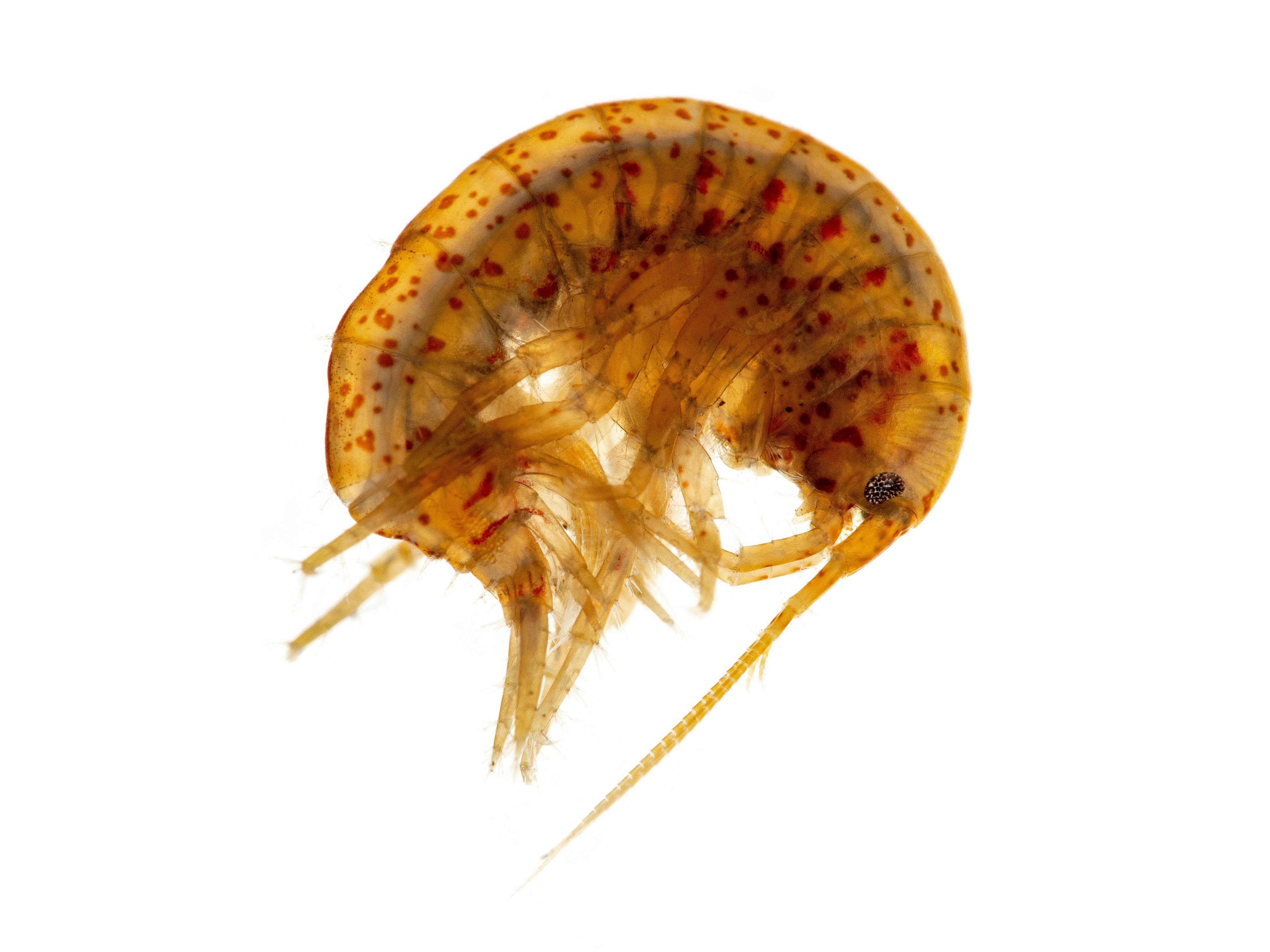Gammarid Micropollutants Quantified Using New LC–MS/MS-Based Method
Scientists from CARSO-LSEHL in Vénissieux, France and the Universite Claude Bernard Lyon in Villeurbanne, France recently created a new liquid chromatography coupled to tandem mass spectrometry (LC–MS/MS)-based analytical method for quantifying micropollutants in Gammarus fossarum biota. Their findings were published in the Journal of Chromatography A (1).
freshwater amphipod or scud, Gammarus lacustris, photographed on white background, side view | Image Credit: © Ernie Cooper - stock.adobe.com

Chemical contaminants, such as pesticides, flame retardants, and pharmaceuticals, while being regulated and banned by different international health organizations, are continuously released in rivers due to contaminations in soils that are reservoirs. Wastewater treatments cannot eliminate these substances, which runs the risk of these harmful compounds reaching drinking waters. In response to this, Environmental Quality Standards (EQSs) have been made to set maximum substance levels in water. However, micropollutant analysis in biota such as gammarids is a challenging and poorly documented process. In this study, the scientists hoped to simplify and optimize this challenge.
Extraction and instrumental analysis of micropollutant traces in gammarids was conducted in this study using a variety of techniques, mainly liquid-liquid extraction (LLE), solid phase extraction (SPE), or QuEChERS (Quick, Easy, Cheap, Effective, Rugged, and Safe) extraction. The micropollutants that were specifically targeted in this instance were organotins, personal and pharmaceutical care products (PPCPs), pesticides, flame retardants, and perfluorinated compounds. The scientists created a sample preparation method based on QuEChERS followed by liquid chromatography coupled to tandem mass spectrometry (LC–MS/MS). Using this, different salts (acetate and citrate) and purification methods (addition of hexane, dispersive SPE) were tested and validated. There were issues with quantifying targeted molecules, but the analysis of 40 compounds were eventually validated using ICH guidelines. Limits of quantitation (LOQs) ranged from 0.04 ng/g to 313.5 ng/g. Specifically, with perfluorooctanesulfonic acid (PFOS) and the sum of hexabromocyclododecane, LOQs reached environmental quality standards in biota, which are 9.1 and 167 ng/grespectively.
This method was eventually applied to 15 real samples. Various compounds were quantified, including perfluorinated compounds, drugs like ketoprofen, and cosmetic products like octocrylene. According to the scientists, “This is the first study to quantify as many emerging compounds, especially organotins, in a sentinel species such as G. fossarum” (1). Finally, the method was used on gammarids exposed in French rivers. Sixteen targeted molecules were quantified at concentrations between 0.04 and 15.7 ng/g, with eleven compounds being perfluorinated and the remaining ones being PPCPs. This study highlights how important biomonitoring using sentinel species is, while highlighting large amounts of contamination by perfluorides and drug residues, reflecting the consumption habits and industry waste disposal habits of the substances that are released in water.
Reference
(1) Duny, M.; Cortéjade, A.; Wiest, L.; Nicolas, M.; Vulliet, E. Single Injection LC–MS/MS Analytical Method for the Quantification of Diverse Families of Micropollutants, Including PFAS and Organotins, in Gammarus fossarum. J. Chromatogr. A 2024, 1720, 464778. DOI: 10.1016/j.chroma.2024.464778

Accelerating Monoclonal Antibody Quality Control: The Role of LC–MS in Upstream Bioprocessing
This study highlights the promising potential of LC–MS as a powerful tool for mAb quality control within the context of upstream processing.
University of Tasmania Researchers Explore Haloacetic Acid Determiniation in Water with capLC–MS
April 29th 2025Haloacetic acid detection has become important when analyzing drinking and swimming pool water. University of Tasmania researchers have begun applying capillary liquid chromatography as a means of detecting these substances.
Prioritizing Non-Target Screening in LC–HRMS Environmental Sample Analysis
April 28th 2025When analyzing samples using liquid chromatography–high-resolution mass spectrometry, there are various ways the processes can be improved. Researchers created new methods for prioritizing these strategies.

.png&w=3840&q=75)

.png&w=3840&q=75)



.png&w=3840&q=75)



.png&w=3840&q=75)














